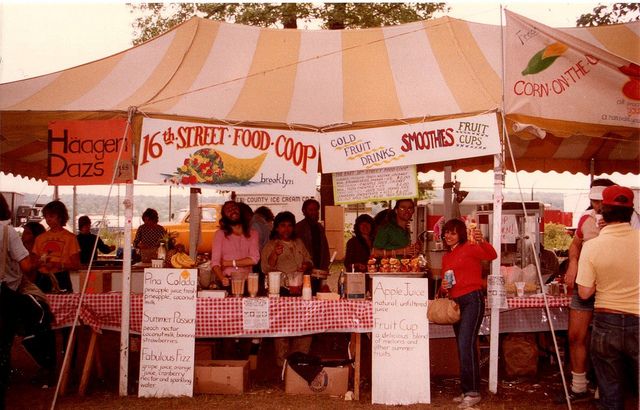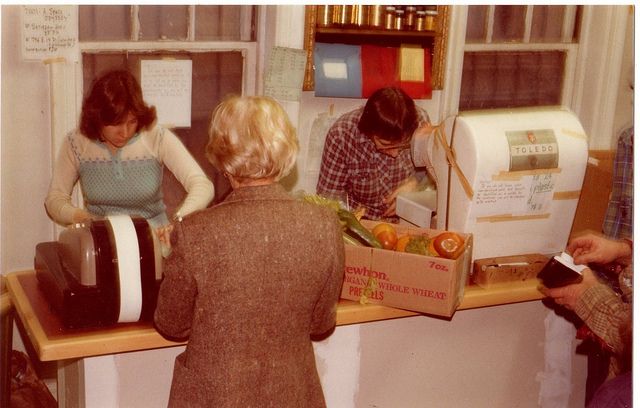The History of the Flatbush Food Co-op


In 1976, 10 people with an interest in healthy living organized a grocery club. Once a month dry goods, and later produce, were delivered and divided among the members. Delicious, whole food at near-whole-sale prices can’t be kept quiet for long—especially back before Greenmarkets became mainstream. Within two years, the grocery club fed 100 members.

16th Street Co-op, May 1979
The Tenth Street Co-op, as they were called back then, increased deliveries to three days per week. Eventually, they rented a storefront on E 16th and Ave H (and changed their name to reflect the location), then elected Barry Smith as the store manager. He managed three employees.
Smith has seen the Flatbush Food Co-op through 36 years, four locations, and three name changes. He led the Co-op through a transition from a members-must-volunteer model to a volunteer-option model (people who worked saved more money). He moved the Co-op from a members-only store to one welcoming people off the street. He is still the General Manager today.
“From the start we were interested in and went after local, organic, fair trade, and environmentally friendly products,” he explained, saying he witnessed America’s awakening from her high fructose corn syrup stupor.
Now, even Walmart sells organic products, but food co-ops remain ahead of the curve providing, among other things, gluten-free options.
“Sustainable meat and fish choices are of growing importance to our customers and members,” said Smith.

16th Street Co-op booth at 1979 Clearwater Festival
In addition to quality food grown close to home, food co-ops follow 7 internationally recognized principles, one of which is to educate members and staff. The Food Co-op, as one effort to educate members, lists recipes on its website. (As research I probably should have tried to cook the Vegan Philly Cheese Steak. Instead, neighbor, I challenge you. Please let me know if it really is as “equally delicious” as the nutritiously void original.)
In effort to sell more locally sourced products, the Food Coop added Red Hook’s Sixpoint Beer.
We recently ran a post announcing the Food Co-op’s extended hours. Comments were split between “great news” and “who are the people who can afford to shop here?!” I shop here, and during the course of researching this post decided to become a member. Why? When I buy bananas from C-Town, my boys refuse to eat them. When they come from the Food Co-op, I can’t keep them in the house; they just taste better. Cost per banana eaten, Co-op wins.

16th Street Food Co-op check-out in 1979, much different from their new check-out!
Regardless of whether you are a Flatbush Food Co-op member, shop for incidentals, or avoid it altogether, the Food Co-op is an anchor of Cortelyou Road and an integral part of the neighborhood’s history. It reflects us. It’s grown and moved with us. It continues to provide us with locally sourced, organic, and minimally packaged options.
What does the Food Co-op have planned for the future? Perhaps, staying ahead of the nutrition curve, it’ll advertise corn-free options. One thing is for certain: we influence the Food Co-op’s future just as we influence the future of our neighborhood.
Editor’s note: Our thanks to the Flatbush Food Co-op for supporting this blog by being one of our sponsors. Please show them some love online, on Facebook, on Twitter, and in person at 1415 Cortelyou Road at the corner of Marlborough.



